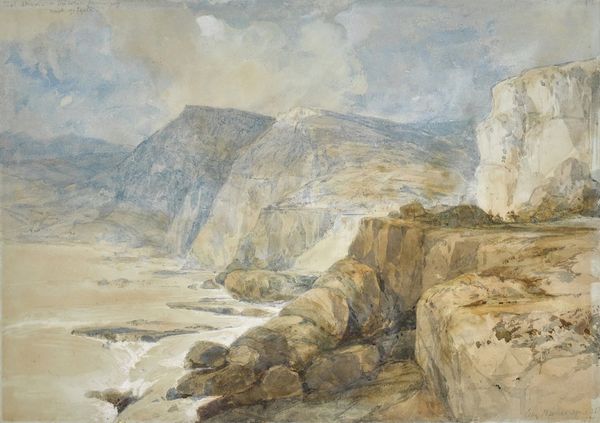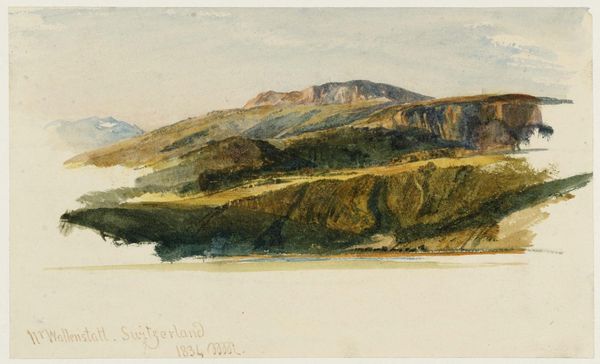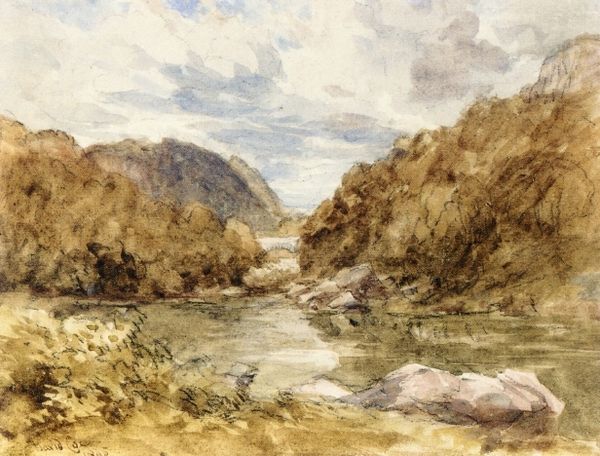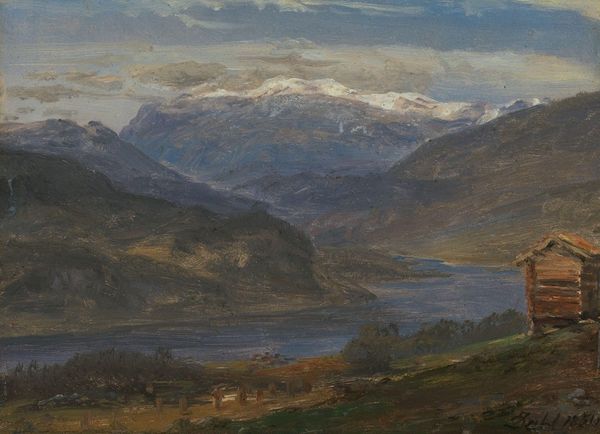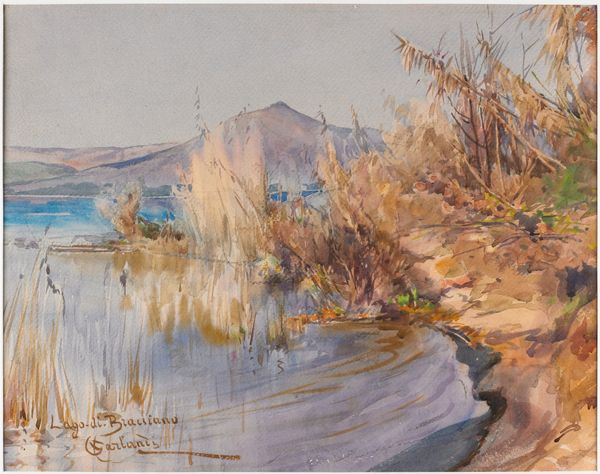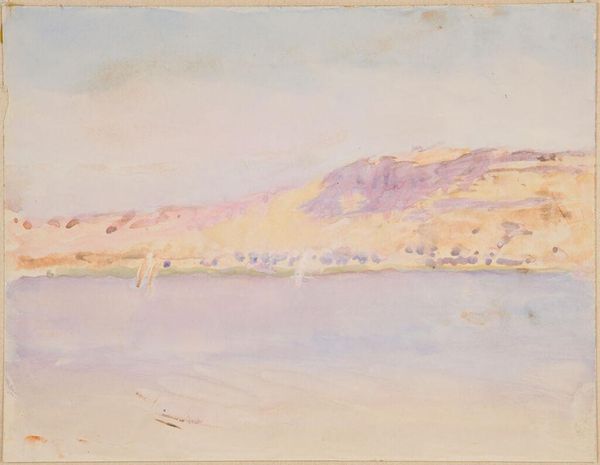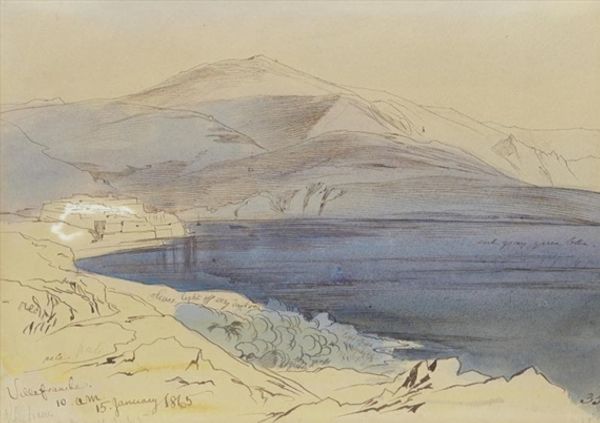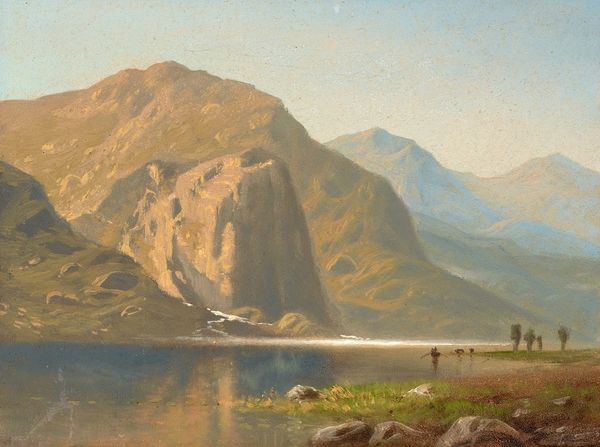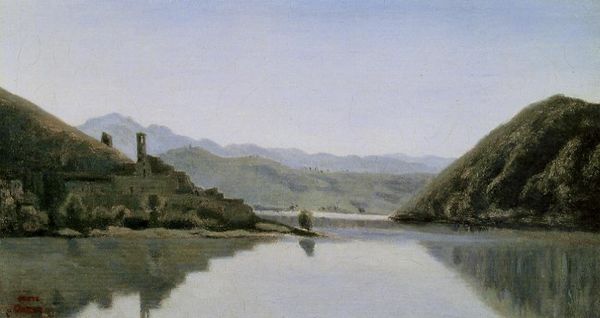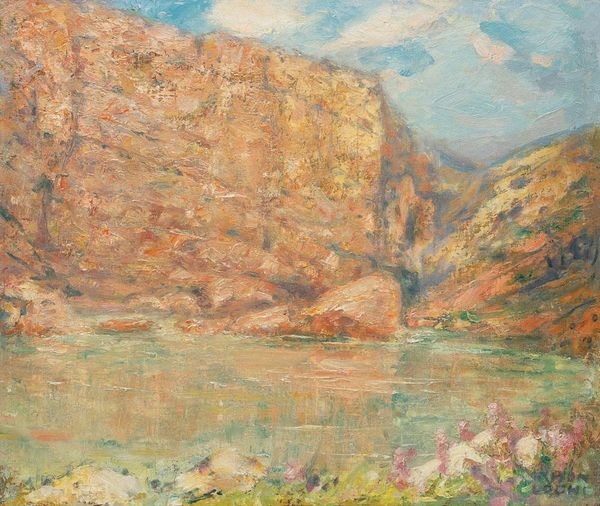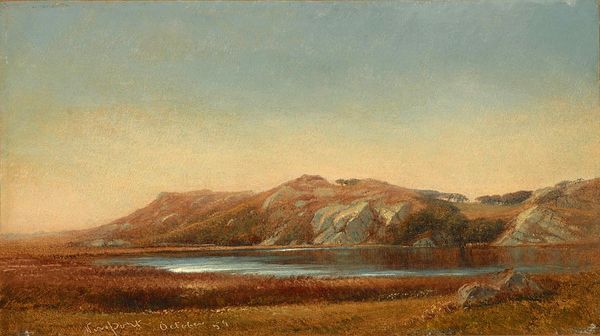
painting, plein-air, watercolor
#
painting
#
impressionism
#
plein-air
#
landscape
#
impressionist landscape
#
oil painting
#
watercolor
#
watercolour illustration
#
watercolor
Copyright: Public domain
Curator: Julian Ashton painted this watercolor in 1886. It's titled "Sentry-box Reach, Hawkesbury River, New South Wales." Editor: What strikes me is its quiet luminosity. The misty mountains reflected in the still water—the entire composition feels delicate and contemplative, like a fleeting memory. Curator: Ashton's embrace of the plein-air method really captures the essence of a specific time and place. Think about the conditions of artistic production here: hauling materials to the riverbank, directly engaging with the environment... it informs our reading. Editor: Absolutely. And within that production, note the calculated arrangement of the pictorial space. The hazy blues in the center are neatly framed by warmer earth tones—the browns, yellows, and muted greens. This is so carefully balanced. Curator: The choice of watercolor itself speaks volumes about materiality and availability in that colonial context. Its portability facilitated artistic exploration beyond established studios. Ashton isn't just painting scenery; he’s part of a larger economic and social fabric. Editor: I see your point about materials. Yet the way he uses watercolor— layering translucent washes—builds incredible depth, pulling us into the scene. Look closely and the marks become abstract shapes and lines—it is the way these parts form a harmonious whole. Curator: Those seemingly effortless washes also require labor and technical skill—it reflects the professionalization of art education in Australia at the time. Editor: Agreed! Still, observe how light and shadow define form, create perspective and enhance volume within a somewhat narrow value range—brilliant orchestration within restricted formal constraints. Curator: We can interpret Ashton's choice of this specific locale—Hawkesbury River— as engaging with broader narratives of colonial expansion, resource extraction, and their impact on indigenous populations. The artwork's surface is intertwined with underlying power dynamics. Editor: Yes, its historical placement matters deeply but what prevails is a sense of ephemeral beauty rendered tangible through astute formal observation and technical command. Curator: Absolutely. When you examine "Sentry-box Reach", the dialogue between aesthetics and historical awareness provides rich interpretative possibilities. Editor: Precisely—ultimately it's where formal artistry and contextual understanding converge that gives artwork its enduring resonance.
Comments
No comments
Be the first to comment and join the conversation on the ultimate creative platform.
